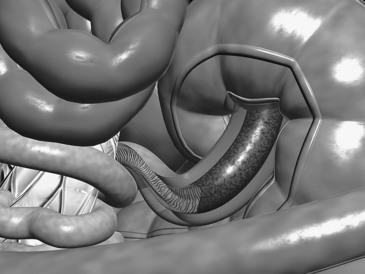CHAPTER 89 Ileal Impaction
The most common site for intraluminal impaction of the small intestine in horses is the ileum. The prevalence of ileal impaction varies with geographic location, and is seen more commonly in the southeastern United States. The exact cause is unknown; however, associations with fine, high-roughage forage, coastal Bermuda hay, and tapeworm infestation (Anoplocephala perfoliata) have been implicated. In retrospective studies of acute abdominal disease in horses, the prevalence of ileal impaction varies from 0.5% to 10.8% and accounts for 12% to 42% of all ileal obstructions.
ETIOLOGY
Coastal Bermuda grass hay is produced from the high-yielding warm-season perennial grass grown extensively in the Piedmont and coastal plains regions of the southern United States. This hay is typically a stemmy, fine forage that increases markedly in lignin content and consequently in crude fiber content as it matures. As the crude fiber content of the hay increases, dry matter, protein, and energy digestibility decrease. Although ileal impactions are associated with consumption of Coastal Bermuda grass hay, other factors (quality of Coastal Bermuda grass hay, decreased water intake, and weather change) are probably importantly associated with the disease. Dilution of the hay with another type of hay does not appear to eliminate the risk of ileal impaction, and recent introduction of the hay and mistaken feeding of it appear to have been involved in some cases of ileal impaction. Impaction results from accumulation of ingesta in the ileum and complete intraluminal obstruction (Figure 89-1). Spasmodic contraction of the ileum and absorption of water from the ileum dehydrate the ingesta mass and further exacerbate the impaction. In the western United States, where legume hays are the primary source of roughage, ileal impaction is rare. Less common causes of ileal impaction include ileal hypertrophy, mesenteric thrombotic disease, and ascarid impaction.




